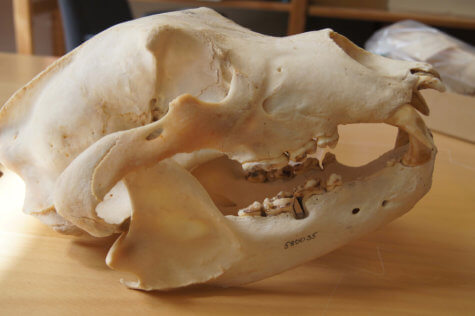UPPSALA, Sweden — Bacteria found in the mouths of wild bears show how widespread resistance to antibiotics has grown over the years. Brown bears born after the development of strict control measures on the use of antibiotics have lower levels of resistance, say scientists.
Germs and bacteria are slowly defeating the drugs which have been designed to kill them, a process known as antibiotic resistance. Infections by drug-resistant bacteria are already on the rise and responsible for hundreds of thousands of deaths each year. Antibiotic-resistant bacteria, often found in hospitals, have filtered into natural environments through wastewater. Here, they can be picked up by wild animals and transmitted to humans through activities such as hunting.

Looking at how levels of resistance have changed in animals since the start of antibiotic mass-production in the 1940s has not been possible until recently. Now, scientists at Uppsala University in Sweden have managed to trace the history of antibiotics by looking at oral bacteria in bears.
“We specifically looked for bacterial genes that provide resistance to antibiotics. Their abundance closely follows human antibiotic use in Sweden, increasing in the 20th century and then decreasing in the last 20 years. We also find a greater diversity of antibiotic resistance genes in the recent past, likely as a result of different kinds of antibiotics being used by humans,” says study lead author Dr. Jaelle Brealey, a postdoctoral researcher at the Norwegian University of Science and Technology, in a statement.
‘Similar levels of antibiotic resistance’ in bears both near and far from civilization
Scandinavian brown bears usually live far away from human beings, but can sometimes approach villages and cities. Brown bear specimens from museum collections in Sweden, some of which are 180 years old, were studied by the researchers.
Specifically, the researchers analyzed bacteria from the animals’ mouths, which have been preserved in plaque around their teeth. Tartar, also known as dental calculus, can remain unchanged for thousands of years. They expected to find bears living in more densely populated areas would have higher antibiotic resistance, but this was not the case.
“We found similar levels of antibiotic resistance in bears from remote areas and those found near human habitation. This suggests that the contamination of the environment with resistant bacteria and antibiotics is really widespread,” explains senior study author Dr. Katerina Guschanski, who also attends the University of Edinburgh in Scotland.
Sweden has implemented strict control measures on the use of antibiotics, starting in the mid-1980s. It also launched a national strategic program against antibiotic resistance in medicine in 1995.
These measures appear to have worked, as oral bacteria in bears born after 1995 show low levels of resistance, the researchers say. Although these levels are still higher than in bears that lived before humans started producing antibiotics on a mass scale.
“Our study highlights once again the value of historical museum collections, like the one at the Swedish Museum of Natural History, as a unique resource for understanding the effect of recent human actions on the environment,” adds study co-author Dr. Daniela Kalthoff. Looking at bacteria from the past could help monitor environmental changes following new strategies for reducing contamination and pollution.
The study shows how governmental policies, like those implemented in Sweden, can help mitigate major health threats on a national level, and how human activity impacts natural environments, whether positively or negatively.
The findings are published in the journal Current Biology.
South West News Service writer Tom Campbell contributed to this report.
